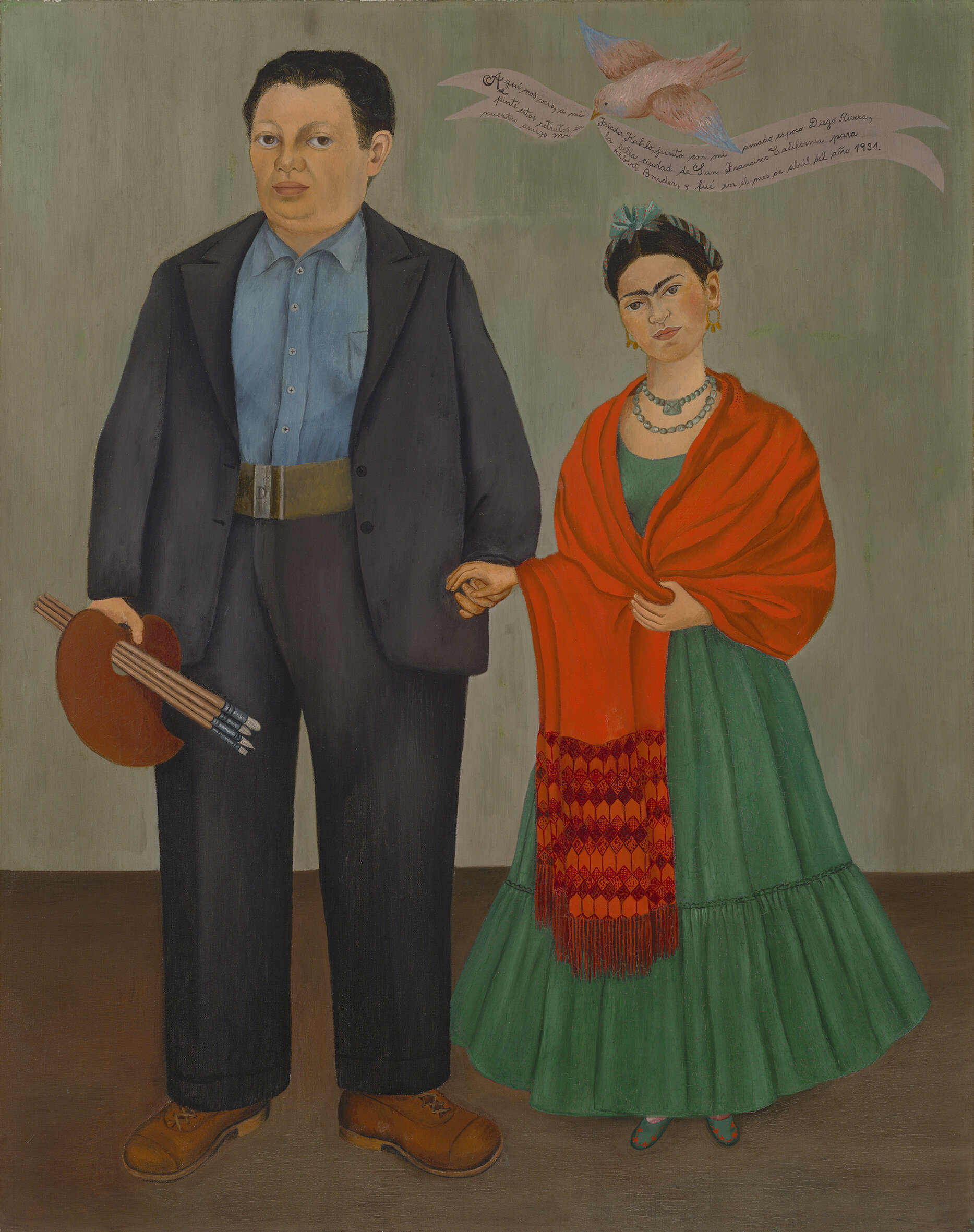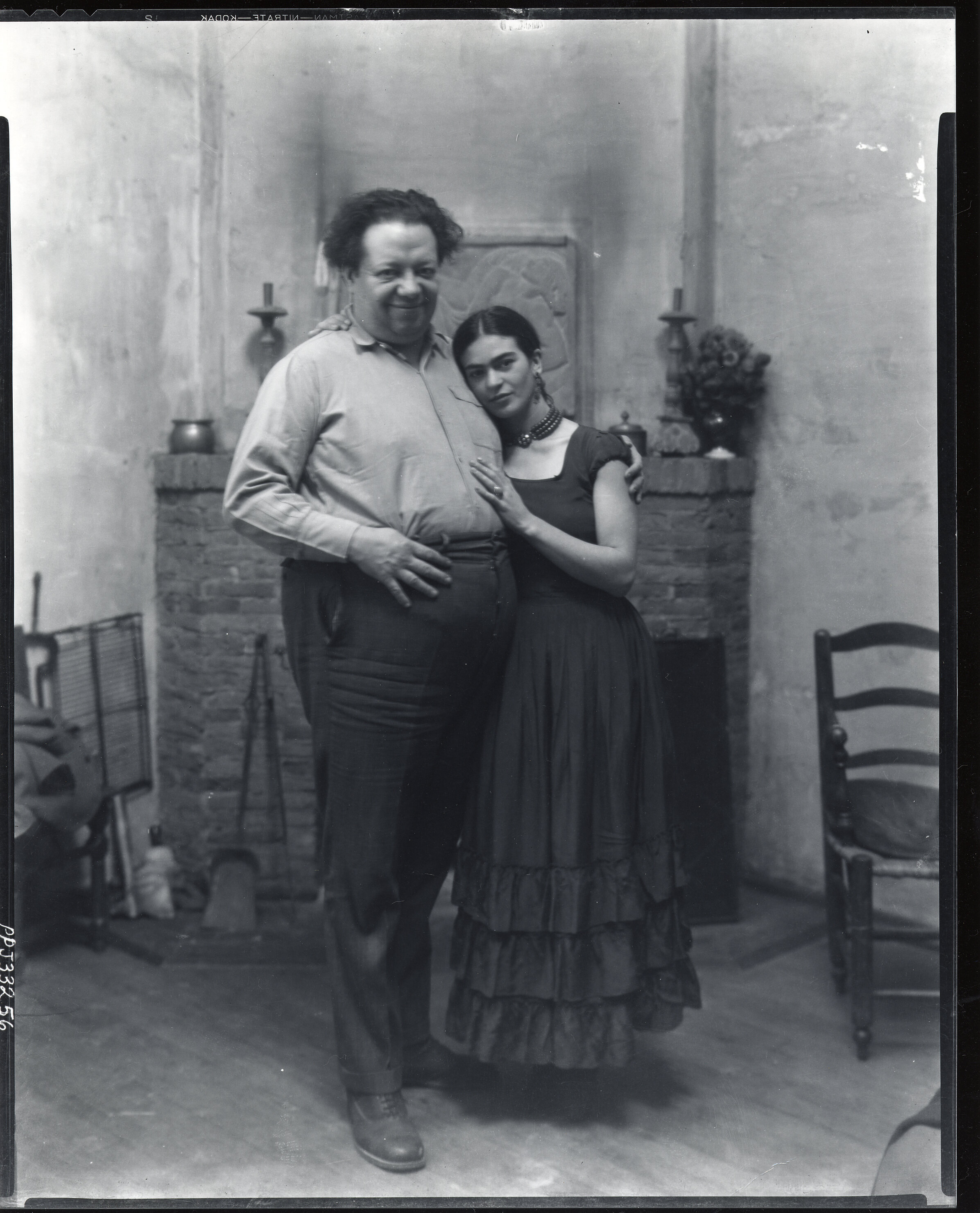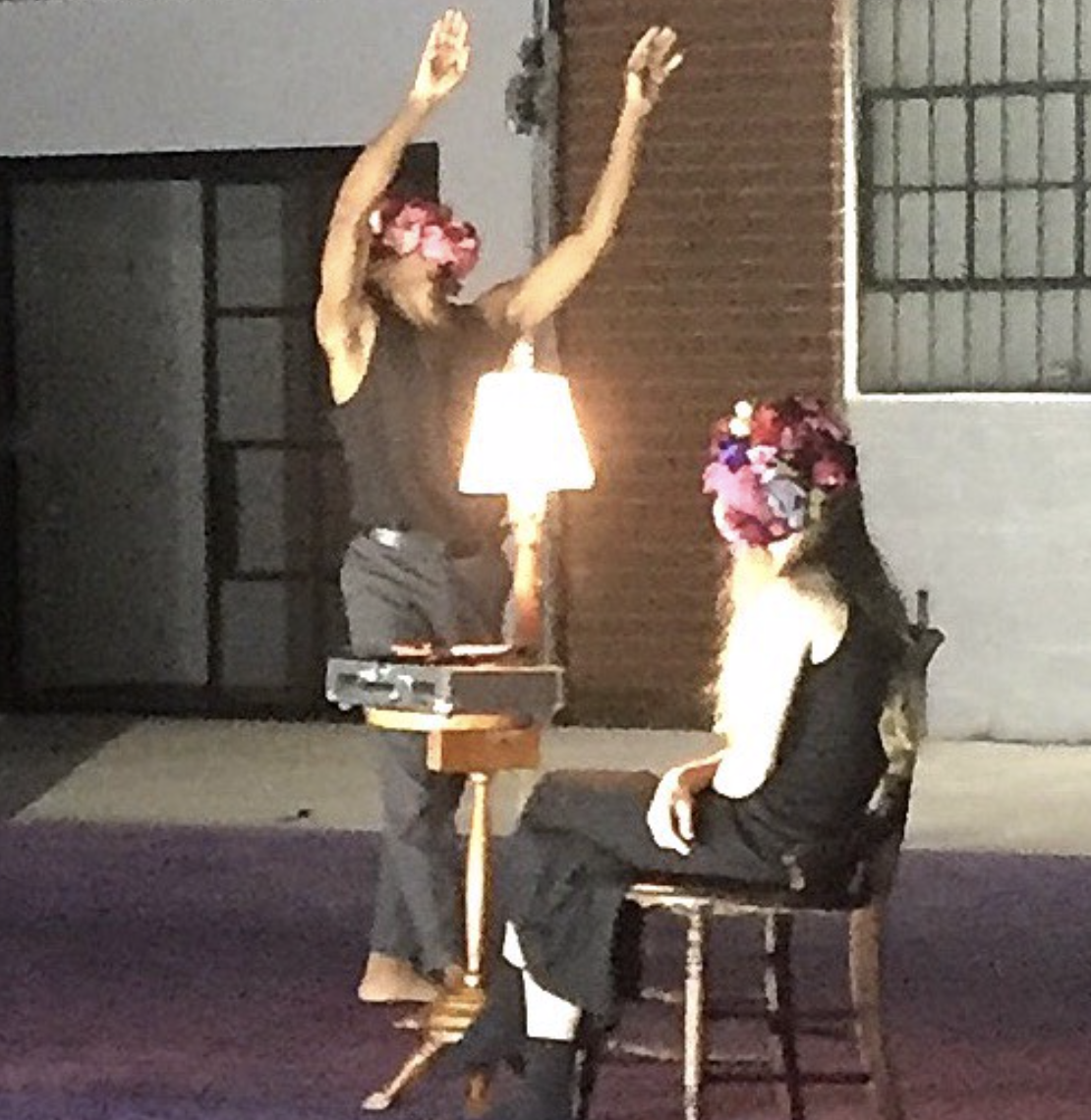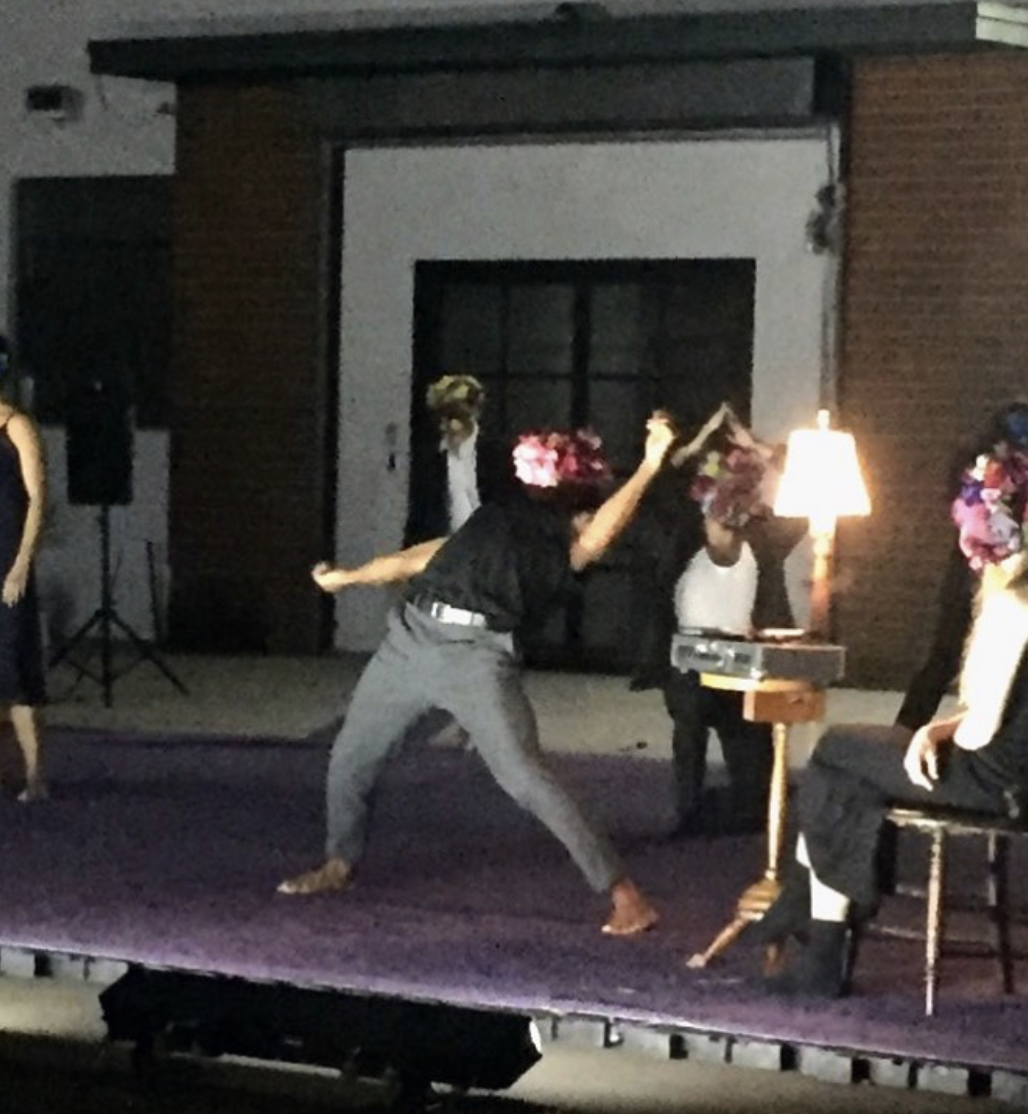Continuing in its restoration of the work of Jacques Rozier (see my story for Air Mail on his Bardot film), the Cinematheque Française has just loaded a charming early Jacques Rozier short, Blue Jeans, made when he was just 30, which showcases this early member of the Nouvelle Vague's insouciant take on life, love, and the Cote d’Azur. It's available for free on their Henri (named after the founder, Henri Langlois) channel, with English titles along with many other jewels.
This time we find ourselves with two young, gorgeous, hotshot drageurs (the French word for pick up artists is just so much more efficient) who wear tucked in white shirts and blue jeans (no longer called blue, but then, only blue, appropriated from the farm) who don't consider a day's work done until they have found some lovelies to share the night with. Hunting for prey on their Vespas in and around Cannes, they happen upon two wasp-waisted, short shorted, high heeled wearing beauties who fit the bill and after some to and fro, hop aboard to trip the life fantastic. The beach is the scene of their making out, their dancing (the chacha!) and eventually their come-uppance. Actual work plays no role, being on the make, without money, turns out to be a full-time pursuit. All this to a Cuban soundtrack that lifts the spirits. Jean Luc Godard wrote, " A buoyant short, young and beautiful like the body of a 20 year old as Arthur Rimbaud has described it."
Albert Frey at ADFF

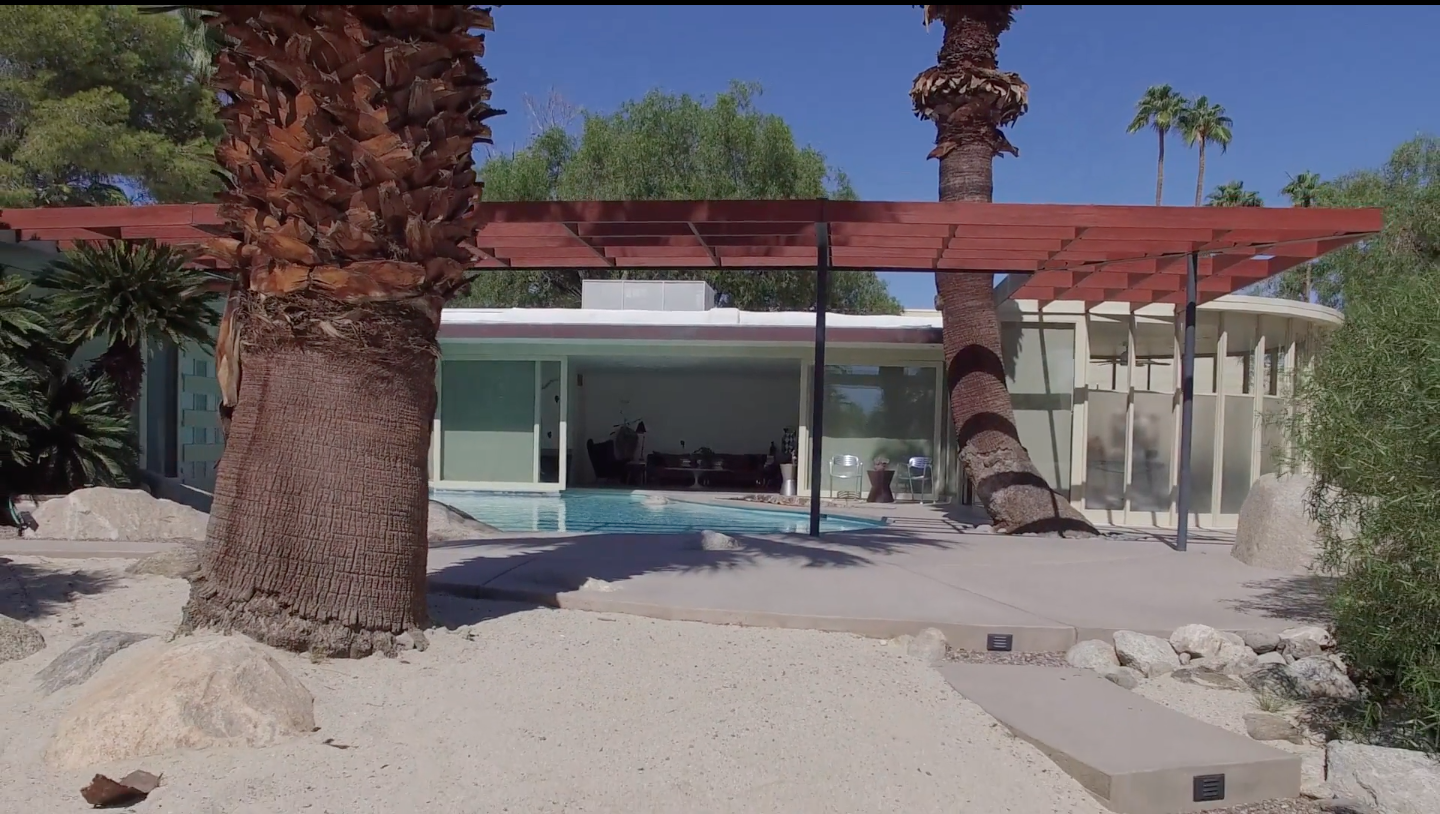
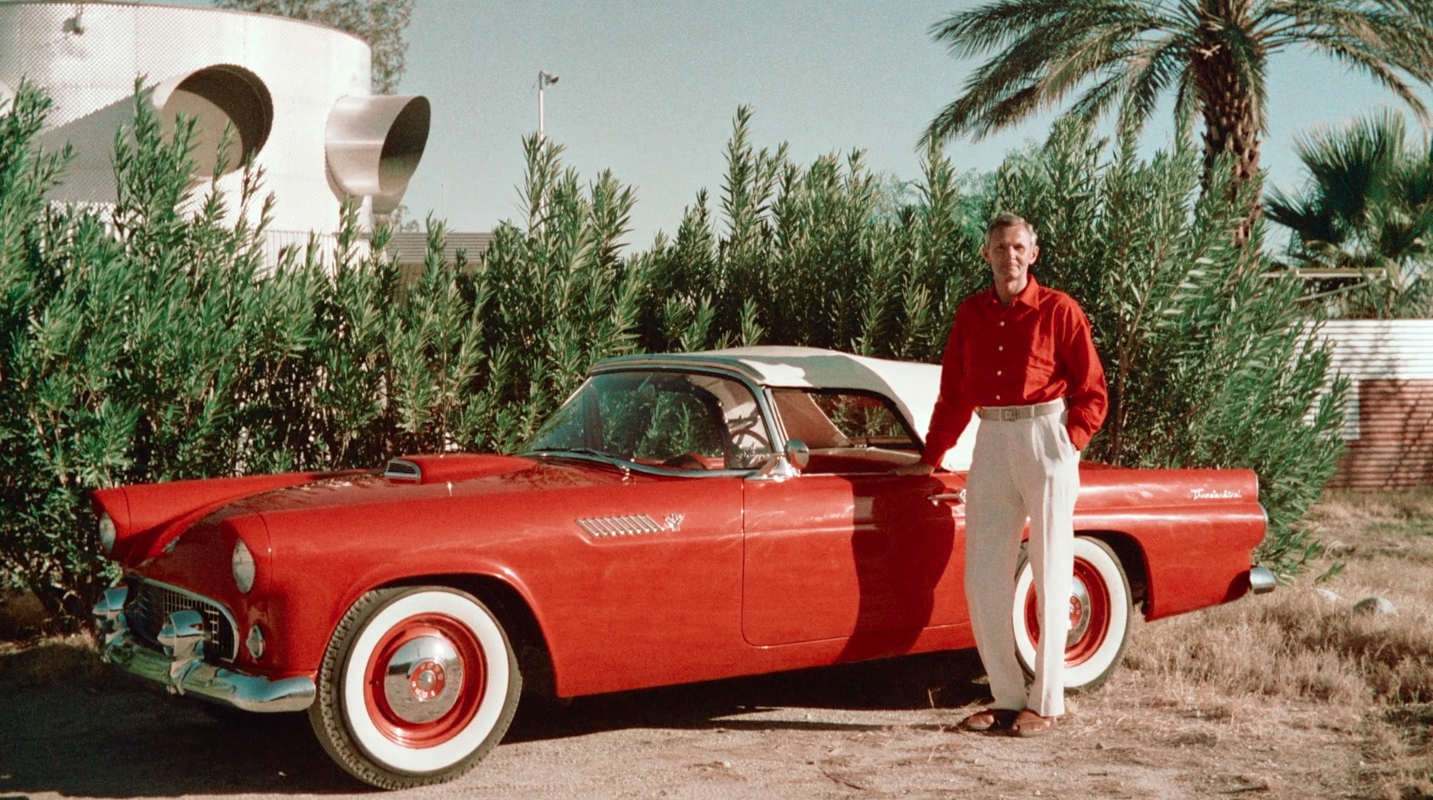
The Albert Frey films in the Architecture & Design Film Festival this week, in two parts, make for less organic filmmaking but they are instructive about an architect who abandoned the possibility of fame in New York for the desert southwest, especially Palm Springs. A very old fashioned multiplicity of talking scholarly heads makes for a didactic filmed lecture more than anything else, but the architect himself rescues the project with his own color films he took of his many global travels.
Frey began in Zurich, made his way to Brussels, Paris and Le Corbusier, then to New York's Architecture League and Architecture Record and a hand at the Philip Goodwin MoMA, but after a few trips cross country by car became enamored of the freedom and difference of the desert. Adapting the historicism of Corbu's five points of architecture, and the corrugated roofs of his childhood, he developed a vernacular modernism in this growing desert city.
The lightness and light of the projects from his Long Island Aluminaire house to his own houses to the Palm Springs City Hall, a Salton Sea club and the tram station make for luscious viewing and the self effacing architect, heard in voice over and a few interviews is very appealing.
A dedicated loner whose personal life is left slightly mysterious, Frey took what he learned from Corbusier, Mies and the desert and made it his own.
Alvar Aalto at ADFF
This year's Architecture & Design Film Festival, beginning on the 19th, is filled with goodies and I urge you to get a series pass. A film about Alvar Aalto is eye opening. First for the insiders view of many of the 200 projects he did internationally, but secondly for the look at the man and his wives (there were two) who were instrumental to his practice.
In a trip I took to Finland some years ago, I was able to see a number of the Helsinki projects--the grand Finlandia Hall with its late period white aesthetic, the National Pension Institution with its doorless elevators and step down library, his cozy home, the Modern Library and then outside the Paimio Sanitorium which some consider his finest work.
But I had not seen most of the projects further north, and in Germany and especially one house for a French art collector the Maison Carre which looks sublime and his many churches, schools and municipal buildings, MIT and a room at the UN--all this and more is on offer in this very warm and wonderful film.
Of course his furniture, which was once the most successful modern line sold around the world is still coveted for its clean lines and its wood aesthetic. The hanging lamps are especially pleasing, all handcrafted.
I was not aware that towards the end of his life, Aalto was reviled in Finland for his capitalist projects, his wartime flirtation with Germany, and among friends, his alcoholism. Aalto, whose charm, erotic approach to life and work, bonhomie, and huge success attracting important clients (Laurence Rockefeller a steadfast patron) was a falling down drunk at times. Nonetheless, his body of work is consistently superior.
Tokyo Ride
The film, Tokyo Ride, part of this year's Architecture & Design Film Festival begins in a rainstorm. Ryue Nishizawa-half of the Pritzker winning architectural duo SANAA- picks up filmmakers @bekalemoine (whose architecture films are in MoMA's collection) and after apologies for surprising the camera on him so soon, they begin a ride around Tokyo in Nishizawa's beloved Alfa Romeo whom he affectionately calls Giulia. And so begins a Cinema Verite, Nouvelle Vague-esque ride. It's utterly charming.
With a dour face that breaks into a smile, a Beatles bowl haircut and a straight man delivery, Nishizawa is an unconventional tour guide. In floral and polka dotted shirts, he opines on Tokyo, the differences between East and West architecture (Japanese people love newness; Europeans are armed, Japanese architecture like a verb, European like a noun, KenzoTange and Saarinen must have been in some kind of interstellar pre-internet communication etc). He loves Italian cars for their soulfulness, German cars are stricter and indeed the car is as much a character as the filmmakers who try to be unobtrusive but are part of the ride.
A visit to a soba shop for lunch is fun but the real eye opener is a visit to his partner Sejima's house which he designed for her and her parents.It has something of Eames in its plan and transparency but also traces of Mies and Le Corbu--his stated favorites. Sejima and Nishizawa expose their history of bickering (their personal relationship is somewhat mysterious, some larger projects done together, others individually) and if you ever wanted to know what goes on behind closed architectural doors, this is a great place to start. In her six inch platform shoes and Louise Brooks haircut she is both self effacing and determined. After a visit to her office (his, hers, their offices all in same building) and a tour of Tokyo stadiums, the film ends at the house of Nishizawa's friend and client Moriyama serving up some gorgeous take out sushi (don't see this film hungry).
I'm looking forward to other films about Paul Williams and Nakashima so check out the ADfilmfest website.
Cecily Brown
The legend of the British-born painter Cecily Brown has been carved into the lore of contemporary art. After three decades of steady validation this former renegade of the London art scene has allowed herself to come full circle in two simultaneous exhibitions. A commission from Blenheim Palace, returns her to England-- And an exhibition of “Bedroom Paintings” at Paula Cooper Gallery returns her to intimacy. A new monograph exploring her formation and oeuvre, out this month from Phaidon completes the picture.
Unlike Pablo Picasso or Lucian Freud, who depended on a ready succession of live muses, the inspirations for Brown’s performative practice have been works by long-dead artists and contemporary iconography. Her fairy godfathers have included Francis Bacon, Goya, Gorky, Jackson Pollock, Willem de Kooning, Delacroix, and Philip Guston.
At Blenheim, the good girl gone bad, provoking the art world with her early erotic and sexually violent imagery which first brought her to the attention of Deitch and Larry Gagosian, seems far away. Here her inspirations include the 16th-century Flemish painter Frans Snyders, Richard Dadd, and the 18th-century Sir Joshua Reynolds. In the “Bedroom Paintings” at Cooper, Brown revisits the edgy intimacy of bodies after many years away from this signature subject.
Brown resists categorization between figuration and abstraction and the new paintings walk the tightrope. She is fiercely dedicated to experimentation. “You have to be able to risk losing it,” she has said. Still, as Francine Prose suggests in her essay for the new Phaidon monograph on her, whereas we might once have invoked Bosch or Brueghel when we studied Cecily Brown, “now we think of a Cecily Brown painting when we look at the Bosch or Brueghel.” A great tribute to an artist who once thought she was doing everything wrong.
NYC Ballet Digital Fall Season
I think you can still catch the NYC ballet Digital Fall Season with its five premieres today. Produced under the constraints of losing their entire year, it showcases choreographers who have plans to work with the company on longer works. But most important: it shows these ballet dancers can do just about anything.
Here they are using the Lincoln Centercampus, which beats the festival they once had about Architecture of Dance (see my piece for Huffpost) There's nothing like seeing Lincoln Center, like a Giorgio de Chirico painting, empty, surrounded by orange and white bollards, as a backdrop for contemporary movement.
I especially liked Sidra Bell’s piece for taking advantage of that energy bouncing off the buildings, Andrea Miller’s romantic piece to the music of Victor Jara, where the four dancers danced in water, and Justin Peck's which broke out of the campus and found other NY City spots that make our hearts zing. Sara Mearns in an after dark Chinatown was especially haunting.
Hollywood Arensbergs
Image courtesy Philadelphia Museum of Art and University of Delaware Library
In a time when great private collections are largely out of reach and their owners fingered as friends of pedophiles or owners of weapon firms, a new book, Hollywood Arensbergs, published yesterday by the Getty, tells refreshingly of a couple who were deeply devoted to artists, intensely private, and who managed to amass one of the more diverse high quality collections of the 20th century, largely out of sight of all but their closest friends and neighbors. Alongside works by the great masters like Matisse and Miro in their house in Los Angeles was a pre-eminent collection of mid century modern art, African and Pre-Columbian art. Described by a reporter who visited the house at the time, "these gentle, gracious...hosts...are at home with this art, as unself-conscious and unpretentious about it as one's grandmother."
Marcel Duchamp was one their closest friends and he helped build their collection. Picabia, Charis Weston, and others came to visit. (Richard Neutra did an addition to the Spanish revival home designed by the architect of Graumans chinese theatre.) This is where the infamous double wedding of Man Ray and Juliet Browner and Max Ernst and Dorothea Tanning took place. The celebrated names in the text are dropped like pearls instead of inserts on Page Six. The photographs are intimate and feel about as close to the now de rigeur virtual tour as can be imagined.
Though their apartment in NY was also legendary, in Los Angeles, which had first drawn them for both the weather and the relative anonymity, their home became the tightly knit center of the creative class. Reading about Walter and Louise made me yearn for a time when art was not an asset class but something that just simply made your heart sing. Alas, however the LA museums were not smart enough to retain the art collection and so the Arensberg collections are now scattered: the art at the Philadelphia Museum of Art, Walter's collection devoted to the oeuvre of Sir Francis Bacon at the Huntington Library. The book is a project of the Getty. So in a belated sense, the Arensbergs have come home.
Orpheus and Apollo at Philharmonic Hall
The Preservation League of New York State, in conjunction with Landmark West hosted a zoom designed to bring more attention to the abrupt and ill considered removal in 2015 of the glorious Richard Lippold sculpture Orpheus and Apollo at Philharmonic Hall (variously known as #AveryFisher and now David Geffen) at Lincoln Center. Well, they have mine, and now maybe yours.
Apparently the new architectural plans cannot accommodate this beauty. The panelists, among them the indomitable Phyllis Lambert who singlehandedly got her father Samuel Bronfman, to create the greatness that was (and still is sort of) The Four Seasons restaurant which also houses a Lippold described this artist's meticulous work process and flair. His piece was landmarked with the entire restaurant as it was understood the art and architecture were inseparable.
Max Abromovitz, the original architect, worked with Lippold at Lincoln Center from the outset. It made a rather humdrum tier of the hall pop.The piece was apparently dismantled without markings or without great care--putting it back together will be a challenge. A presentation by historian Marin Sullivan who is writing a book on these sculptures and others of the period (Harry Bertoia etc) was riveting. There's no question that a great misdeed has occurred.
Deborah Borda— In LA you were so proud of the Disney Hall architecture. I know you have recently cancelled your whole season until June. I mourn the absence of the orchestra also. But please revisit your plans with your architects and see if they can't find a way to restore this singular object to its rightful place even if it's not exactly the same place.
Ed Ruscha's Love Letter to Los Angeles
Great news! Ed Ruscha's expansive love letter to Los Angeles, is now newly digitized and accessible at 12sunsets.getty.edu via his archive of street views of LA which he began with Every Building on the Sunset Strip, a small but ultimately very moving and powerful book documenting the city in his own idiosyncratic way: from the back of a pick up truck.
The original slim volume from 1966 was egalitarian and clear-eyed: the city was younger, brasher, and not New York, but it gave me the first real perspective on why it could be just as intriguing. Ed expanded this effort over the years to include other streets, but for me the Sunset Strip is still the foundational work in the series.
Shuttling as I have for most of my life between the two cities, I understood through Ed's holistic, ongoing efforts what low rise, often generic, yet distinctive amalgam of architecture made up LA, and why it mattered. The Getty acquired his archive of the actual imagery plus all the ephemera surrounding his creation, and now, in a fully searchable database, you can pick your year, your street, your view.
LA is still in lockdown. As Europe and New York have opened up, it's been a real challenge to find the here here in the city. That the Getty would offer up this very wonderful archive to us right now is a true gift.
(If you want to know more about Ed and his merry band of bad boy artist colleagues Ed Moses, Billy Al Bengston and Larry Bell during the early years of the LA Cool School, please go to Wallpaper and check out their archive where you will see my story and a video in which they tell about these wild years in the LA art world)
Sound/Stage at the LA Philharmonic
Though the visual arts still have access to us during the pandemic, the performing arts are suffering mightily. From artists who are part of large organizations to individuals in smaller companies, these troupers are largely unable to gather. A few virtual experiences manage to break through to be uplifting in a way that almost feels like the real thing.
The LA Philharmonic, completely shut down both during its seasons at Disney Hall and the Hollywood Bowl has just begun a series called Sound/Stage focusing on dance music appearing on Fridays. This week's episode, Salon Los Angeles, is an enchanting look at the art of danzon, Mexico's signature ballroom dance as practiced in the vintage Salon in Mexico City (alas, apparently soon to be permanently closed). Gustavo Dudamel, ever inclusive and resourceful, invited some dancers from the Grandeza Mexicana Folk Ballet company to the Bowl to demonstrate in the empty aisles and he leads the orchestra, socially distanced from each other behind plexiglass screens, in this rousing dance number Danzon Number 1 by Arturo Marquez and Gershwin's Rhapsody in Blue with pianist Jean-Yves Thibaudet.
It is the Danzon that had me up on my feet. This dance which depends on precision, and tightly constructed elegant movements, is fleshed out in a bonus sidebar of goodies, including a very moving conversation with film director Alejandro Inarritu who remembers his in-laws stylish danzons in Veracruz. But it is the poignant images of the dancers in an empty Hollywood Bowl that brought me to tears.
Phillip Guston
There has been a great deal of press, largely negative, on the decision of four major museums to postpone this Philip Guston retrospective. They don't say it's because of his Klan images, but that's what it's about. Though Jerry Saltz comes down on a less hostile note, saying that the underlying institutions need to address a systemic bias along with this postponement, I'm afraid-after reading a great deal-- I land on the side of those who regret the momentous decision.
Often referenced in the stories has been what many regard as the first global incidence of turbulence in the Whitney Museum's decision to display Dana Schutz's Open Casket painting of Emmett Till. There too, I felt keenly the artist's intentions which were all to the good. Some say that is no longer enough.
Guston is not alive, and can't be canvassed, but his corpus and his history in Los Angeles as a young, committed political activist suggest that he would have been very disturbed by this decision; his daughter Musa says so and she would know. I love Guston--so does Schutz and so many artists who have derived both stylistic and narrative lessons from this bold artist who eventually went against the prevailing AbEx winds.
NOMAD x Phillips at the Palais Bulles
Photography by Studio J'Adore Ce Que Vous Faites. Courtesy of NOMAD.
When this marvelous architectural confection came across my inbox this week I just had to share. The Palais Bulles (literally the Palace of Bubbles) which overlooks the Mediterranean, part of this year's @nomadcircle and @phillipsauction private sale collaboration has been owned by Pierre Cardin since 1992, and was originally built by Hungarian architect Antti Lovag for his friend and patron French industrialist Pierre Bernard and finished as recently as 1989. I thought it was a sixties structure, in keeping with the Cardin dress designs that also were hallmarked by this kind of fab pop innovation (I once went into the right bank Paris boutique in jeans to buy a belt which is all I could afford. This was not well received by the mod salesgirls).
Lovag, who had apprenticed with Jean Prouve, apparently coined the word habitology to describe his style which was to meld natural forms with the built environment. Water is everywhere, you can feel under the sea and on top of a hill at the same time.
The house was renovated by one of my favorite architects Odile Decq whom you can read about here. Apparently you can rent it: giving a party here would be a dream.
Frida Kahlo: Appearances Can be Deceiving
You think by now you know everything there is to know about Frida Kahlo. But a new-ish exhibition at the just reopened @deyoungmuseum , Frida Kahlo: Appearances Can be Deceiving that began at the Casa Azul, and a new companion book, Frida Kahlo and San Francisco delve deeper into the foundational San Francisco periods of Kahlo (and Diego Rivera's) tumultuous life.
The two images here tell a tale of the short early burst of matrimonial harmony in the Rivera's life--and yes she was Madame Rivera at this point. She was all of 23 years old (he, 43) when they arrived in San Francisco for his commission to paint a mural at the SF Art Institute. They fell in with other luminaries.
She seems to have become something of a pet of the local artists. Despite her feeling that American women were 'dull gringas', she befriended a number of women, in particular Dorothea Lange. They had both had polio, and Lange, who also had a withered leg, had gifted her with the doctor who was to become her guardian angel, Leo Eloesser.
In spite of this deformity (and attendant lifelong pain from this and her horrific bus accident), Frida was a show off. She wore her traditional Mexican garb in the streets and turned heads. She began her practice of getting well known photographers to shoot her. She began to emerge from Diego's shadow. So maybe the gringas were dull but something about being in the US did inspire her. The next decade of affairs (he Paulette Goddard, she, Leon Trotsky among many others), recriminations and Frida finding her own way as a very talented artist has been well documented. Ten years later, she and Diego had divorced, remarried in San Francisco and she had become fully Frida Kahlo.
Alice Neel's Two Girls
When I saw this 1954 image in the Hilton Als curated show of Alice Neel's work at David Zwirner in 2017 I could not get it out of my mind. Everything about my childhood in the first northern city to have court ordered integration, New Rochelle, came rushing back to me, though truth be told it has never been far away. The indelible images I have of my friend Eddie--still my friend--the lone black boy who was deposited by a big yellow school bus in our class along with just five other students into different classrooms cannot ever be erased. We all were the experiment--and the suit brought by the brave black parents who merely wanted the same things my parents could access went all the way to the Supreme Court via Thurgood Marshall and a lesser known, but heroic attorney, Paul Zuber.
Alice Neel was a pioneer. She lived among black residents in East Harlem. Als says in the catalog, "Neel was a painter of modern life and part of her genius was based on her knowledge and embrace of the fact that New York was not a homogenous place; she knew there were many different kinds of stories to tell...".
As we navigate these perilous times, both in terms of Black Lives Matter and the disparity in wealth and circumstance affecting us all, we would do well to remember that this is not the first time this battle has been fought and redouble our efforts to understand how we could be living so near to each other and yet so far in circumstance. . Neel's art--and other excellent art being produced now--and indeed her entire approach to life is a way to see ourselves as kindred instead of separate. It's not the answer but a path.
Alice Neel, Two Girls, 1954
Private collection, courtesy Robert Miller Gallery, New York
© The Estate of Alice Neel
Courtesy The Estate of Alice Neel and David Zwirner
Dana Schutz
Dana Schutz's new solo show at The Thomas Dane Gallery in London, opening on the 16th, is a mix of works from 2019 and 2020. What a difference a year makes! This image, Bound, from 2019 has much of her signature frantic feeling but not the darker palette of her more recent works, tinged as they are, inevitably, with thoughts of pandemic armageddon. What is the young blonde with her downcast eyes and her chartreuse slip-ons pondering a la Rodin? How is she connected to the bug-like creature with a remote control in one hand and a bone in the other? Playing the iconography guessing game with Schutz's work is part of the fun. See my piece in Air Mail for the full story.
Dana Schutz
Bound, 2019
oil on canvas
223.5 x 223.5 cm.
88 x 88 in.
© Dana Schutz. Courtesy the artist; Petzel, New York; Thomas Dane Gallery; Contemporary Fine Arts, Berlin.
Photo: Jason Mandella
Drive in Dances
Last night, an act of true bravery occurred: despite Covid, despite the thick layer of toxic smoke that covered the entire metro area, Benjamin Millepied's LA Dance Project premiered their series of Drive in Dances with Bobbi Jene Smith's -- in collaboration with Or Schraiber-- Solo at Dusk, a second time, in my experience, of dance being presented in a parking lot. The first was Benjamin's very engaging Romeo and Juliet at the Hollywood Bowl last summer which ranged throughout the open air theater to the stacked parking lots that surround the Bowl.
This was different. Smith and Schraiber who both have some Batsheva roots in their bios took 7 dancers and in a fusion of ritualistic, animalistic, futuristic and ballroom choreography made magic on a purple carpet outside the rear of the LADP studios. Nine cars are permitted at each performance (two different series over the next weeks) and even as some patrons drank wine and ate their dinners in their hermetically sealed cars, there was still an intense hush over the space as the electric lights made for some serious Gregory Crewdson-style imagery. A record provided the original score by Alex Somers (you could listen on your radio or crack the window) and the huge flowered masks by Janie Taylor who also did the costumes and danced gave the production a futher nudge into surrealism. Solos alternated with pas de deux and jittery, frantic group movements, almost chimpanzee-like which reminded me of the apocalyptic juxtapositions in 2001, A Space Odyssey, and then of Lord of the Flies. Yet moments of prayer were interspersed. We have reverted to animalistic behaviors, staying with our own kinds, hiding out in our dens, fearful yet hopeful. At the end of the 35 minute piece (there are two shows a night) we are encouraged to honk our horns instead of clapping. The dancers are my heroes. Go to their website for further details. Don't miss it if you still can get a parking spot.
New York at Craig Starr’s Gallery
As I long for my New York now far away during pandemic, these images at Craig Starr’s gallery really touched a nerve. Though painters like Yvonne Jacquette and the Ashcan school as well as many important photographers always used New York as a foreground rather than background, so too did these print, etching and lithograph makers who had their eye on the changing architecturescape of the city. Here we find icons like the Brooklyn Bridge, Times Square, subways and the Woolworth Building in their very early years. Starr always has very interesting niche exhibitions with very original curation and I applaud this largely black and white effort in the face of so much big color coming at us this fall in other galleries. (and in the same spirit, NYU Grey Art Gallery is relaunching its digital platform for their wonderful live exhibition from 2008 New York Cool from a later period, the 50's-80's. See my write-up for a longer look at that exhibition)
Louis Lozowick New York - 1923, Lithograph
Jan Matulka Arrangement - c. 1925, Lithograph
All images courtesy Craig F. Starr Gallery
The 450th Bomb Group
On the 75th anniversary of the end of WW2, I am featuring the base at which my father served as a pilot, the captain of a bombing crew based in the southernmost tip of Italy's toe, Manduria, Puglia. I went to visit this base a few years ago to also see the wonderful museum that the local population has opened to honor the American and Italian soliders who fought in this war. The museum is located in a former historic building in the town center, and a dedicated group of local heroes has painstakingly banded together to collect historical documents, artifacts and encourage scholarship. Over the years, I heard much about this group of airmen who stayed in touch with my father and wrote to us about their daring, often dangerous sorties over north Italy, southern France, Austria and Germany. The 450th Bomb Group flew 265 missions in 1944-45--each one detailed by our government--in B 24 Liberators that took many lives but helped enable defeat of the Axis. It's hard to imagine now that Italy is our favored retreat and these beautiful European countries were our enemies that at one time these devastating incursions stood between fascism and democracy. If you watch Rome Open City or other war films, you will understand the flavor of the times.
Marseilles Manifesta
One international event that I am very sad to miss is Manifesta, the biannual disruptor that lands in a city, lately one that needs some help, and promotes interventions that engage the institutions of that city to effect change. This year that city is Marseilles, like Palermo, the site of the last Manifesta, a multicultural epicenter that has been greatly affected over many years by immigration, its port, and the diverse population it serves. This year the focus of the artistic interventions are the Home, The Refuge, The Almshouse, The Port, The Park and The School. The curators take a big bite, but generally the meal is nourishing and I found that unlike many other international events that are more like helicopters that swoop in and out, Manifesta hopes to break through to some lasting changes. Go to their website to see the full program, and the beautiful historic buildings juxtaposed with the future.
Raymond Pettibon's I AM ALARMED at the New Museum
When I saw this t shirt by Raymond Pettibon sold at the New Museum at the time of his marvelous, dense, overwhelmingly engaging retrospective there, I knew I had to own one. Something about it seemed for the ages. I AM ALARMED, it says under a fireball. And I guess you could say I am alarmed. I am alarmed about the most obvious thing: our current administration. But I am also alarmed about California, the leader on so many environmental initiatives, now again under assault from the largest wildfires the state has yet seen. I could go on and on about the list of things I am alarmed about, but Pettibon's t-shirt covers the gamut. (Pettibon is a text genius. Reading his art on the wall took me an entire day and I still didn't get through it all. He's one of our best American writers and pundits) I think you can still get the tshirt online at the Museum's website or when they reopen which will be soon.











